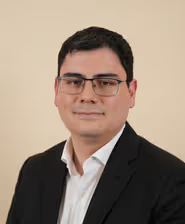Breast reconstruction: Restore your femininity
From 50€/moth
Surgery duration
60 minutes
Anesthesia
General
Postoperative rest
No rest required
Visible effects
2-8 months
Recovery
1 week
Results
Life-long
Implants brand
Motiva®
We are not a franchise
We have our own medical team.
What is breast reconstruction with implants?
Breast reconstruction surgery is a surgical procedure aimed at restoring the shape, size, and appearance of the breast after a mastectomy (removal of the breast due to breast cancer) or following an injury or congenital malformation. This procedure helps women regain their body image and improve their self-esteem by providing results that are as natural-looking as possible.
How is a breast reconstruction procedure performed?
It is important to remember that breast cancer is one of the most common diseases affecting women. In many cases, treatment requires a mastectomy, which involves the removal of one or both breasts. This can be a complex and emotional experience for women, both physically and psychologically. Breast reconstruction surgery can be an effective solution, helping to restore confidence, particularly after battling breast cancer.
Breast reconstruction with implants
Silicone or saline breast implants are commonly used to recreate the shape of the breast. These implants are safe, long-lasting, and designed to provide a natural appearance.
Reconstruction with Own Tissue
This method uses tissue from other parts of the body, such as the abdomen, back, thighs, or buttocks, to rebuild the breast. Known as a free flap or pedicled flap, depending on how the tissue is transferred, this option provides a natural, long-term solution.
Mixed reconstruction
This technique combines the use of breast implants with the patient’s own tissue, creating a stable and natural base for the reconstructed breast.

Who is a good candidate for breast reconstruction?
The ideal candidates for breast reconstruction surgery with implants are generally slim women with small breasts, elastic skin, and intact pectoral muscles. Skin quality plays a key role in determining if this procedure is suitable. Women who have undergone radiotherapy may not be suitable candidates, as radiation can damage chest tissue.
Preoperative tests
The preoperative process for breast reconstruction includes an individual evaluation and surgical planning to ensure the best results. Patients may need to suspend certain medications, and tests such as blood analysis, electrocardiograms, and chest X-rays will be performed. Antiseptic soap is recommended in the days prior, and smoking should be avoided to reduce risks. Hospitalization typically lasts two days for proper monitoring after the surgery.

Postoperative care for breast reconstruction with implants
After breast reconstruction, it is normal to experience fatigue and pain for the first one or two weeks, which can be alleviated with medication. Drainage may be placed to remove excess fluid, and patients will receive instructions on wound and drainage care. It is essential to wear support garments. After one or two weeks, most women can resume their normal activities, but swelling may take up to 8 weeks to subside. Full tissue recovery can take one to two years.
Restores the natural shape of the breast
Provides long-lasting, natural results
Enhances self-esteem and confidence
Improves overall quality of life
How much does a breast reconstruction cost?
The cost of breast reconstruction varies based on the type of reconstruction performed and the number of procedures required.
Factors influencing the price of breast reconstruction
- Reconstruction Method: Costs vary depending on whether implants, expanders, or tissue from the body (flaps) are used.
- Materials Used: The type of implant or additional materials like meshes or grafts can influence the price.
- Duration of the Procedure: Longer surgeries typically incur higher costs.
- Number of surgeries: Multiple surgeries may be necessary to achieve the desired results, increasing the overall cost.
- Postoperative Care: The type and extent of postoperative attention, including follow-up reviews, also affect the total cost.

Where can i undergo breast reconstruction?
At EGOS, we offer breast reconstruction procedures at various locations, making it convenient for you to access the treatment you need.
Frequently asked questions
What brand are the implants?
At EGOS, we proudly use only the highest-quality implants: Motiva implants. Known for their exceptional comfort, natural feel, and beautiful aesthetic results, Motiva implants deliver a highly realistic and flattering appearance.
Is immediate or delayed breast reconstruction better?
Both options have benefits, and the choice depends on the patient’s individual situation. Immediate reconstruction is performed during the mastectomy, minimizing the number of surgeries. Delayed reconstruction may be preferred for women needing time to heal or undergoing treatments like radiation therapy. Your surgeon will guide you in choosing the best option.
Will sensitivity be preserved after surgery?
The preservation of sensitivity after surgery varies. In some cases, sensation may be reduced or altered, especially if nerves were affected during the mastectomy. However, some women experience restored or retained sensation after reconstruction, particularly when their own tissue is used. It's important to discuss this with your surgeon.
What are the risk factors associated with breast reconstruction?
The risks associated with breast reconstruction include:
- Infection: As with any surgery, there is a risk of infection in the treated area.
- Implant or material rejection: When implants or foreign materials are used, there is a risk that the body may reject them.
- Healing problems: There may be slow healing or the formation of thicker-than-expected scars.
- Asymmetry: After surgery, the reconstructed breasts may not be perfectly symmetrical.
- Loss of sensation: There may be temporary or permanent loss of sensation in the chest area.
- Tissue necrosis: In rare cases, tissue death can occur due to inadequate blood circulation in the operated area.
- Capsular contracture formation: In some cases, an internal scar may form around the implant, which can cause tightness or pain.
Is it necessary to use implants?
Implants are a common option for breast reconstruction, but not the only one. Some women may choose autologous tissue (using their own tissue) to create a more natural look and feel. Your surgeon will discuss the best approach based on your health and personal preferences.
Can I combine this procedure with other breast procedures?
Yes, it is possible to combine breast reconstruction with other procedures, such as a breast lift, reduction, or augmentation of the other breast to achieve symmetry and balance. Your surgeon will review your individual needs and discuss the potential benefits and risks of combining procedures.
Is the result permanent?
Breast reconstruction results are generally long-lasting, but changes can occur over time due to aging, weight fluctuations, pregnancy, or other health conditions. Regular follow-ups with your surgeon will help maintain the best possible results.
Does lactation affect the correction of tuberous breasts?
Lactation can affect breast shape, especially in cases of tuberous breasts, but it generally doesn’t interfere with correction surgery. However, pregnancy and breastfeeding may alter breast tissue, so some women prefer to undergo reconstruction after completing their family planning.
When can I see the final results?
You will begin to see the results of your breast reconstruction soon after surgery, but the final outcome may take several months to a year. This allows time for the breasts to settle into their new shape and for swelling and scarring to subside. Patience is essential during the recovery process, and your surgeon will guide you through each stage.
What is the best technique for breast reconstruction?
The best technique depends on your body type, medical history, and aesthetic goals. Some women may benefit from implant-based reconstruction, while others may prefer using their own tissue for a more natural look. Your surgeon will help you explore all available options to achieve the best and most natural result.

Treatments related to breast reconstruction surgery
Our breast reconstruction team

Dr. Tiago Gomes
I have worked with many women who have gone through a difficult journey—breast cancer. For them, breast reconstruction is far more than a cosmetic procedure; it is an essential step in their emotional and physical recovery. Watching the process restore their confidence and help them reclaim their sense of self is profoundly rewarding. I always make sure to listen carefully to their concerns and wishes so that the final result is not only aesthetically harmonious, but also aligned with their own self-perception.
More information
Dr. Santiago Elvira i Barberà
Breast reconstruction has advanced tremendously thanks to modern surgical techniques. Today we can tailor solutions for every patient—whether through implants or using autologous tissue harvested from her own body. Each procedure is unique, and my priority is always to restore breast shape and symmetry while maintaining a truly holistic approach. With the latest methods, we achieve results that blend aesthetics and functionality, dramatically improving our patients’ quality of life.
More information
Dr. Jose Sarrià
Every patient who comes to my office brings her own story, and breast reconstruction is a pivotal chapter in her healing journey. My approach is always to humanize the treatment, fully appreciating the impact that losing a breast has on a woman’s self-esteem and overall well-being. Reconstructive surgery is not merely about aesthetics; it is about giving the patient back a part of herself. Working hand in hand with each woman and delivering a personalized solution ensures that the results reach far beyond the physical.
More information
Dra. Lorena Vives
One of my patients’ biggest concerns is that the reconstructed breast should look and feel natural. Breast-reconstruction techniques have progressed so far that, with modern microsurgery, we can now recreate a breast that not only appears natural but also behaves very much like native breast tissue. When we use the patient’s own tissue—for example, a DIEP flap—the new breast integrates perfectly with her body’s contours, resulting in higher satisfaction and greater confidence in the outcome.
More information
Dr. Edgar Carmona
The most important aspect of my practice is establishing an open, honest dialogue with every patient. Many women arrive carrying fears and uncertainties about breast reconstruction, and it is our responsibility as physicians to explain every available option clearly and understandably. Because each woman has her own expectations and desires for her reconstruction, the decision-making process must be truly collaborative—ensuring that the final result fulfills not only aesthetic goals but emotional ones as well.
More information
Dr. Francisco Mora
I always tell my patients that breast reconstruction is not just a surgery—it’s a comprehensive recovery process. I’ve witnessed how recreating the breast can transform the way a woman sees herself after a mastectomy. Whether we use implants or autologous techniques, our aim is not only to restore form but to help each patient regain her confidence and sense of well-being. Every procedure is another step toward normality, and that has immeasurable value.
More information
Dr. Adriano Hug
Today, breast-reconstruction options are more varied and safer than ever. From next-generation implants to innovative procedures that use the patient’s own abdominal tissue, the possibilities are extensive. What sets my approach apart is adapting these techniques to each individual—considering not only her anatomy, but also her lifestyle and personal wishes. Reconstructive surgery is a cornerstone of recovery for many women, and providing safe, customized options is essential for achieving the best possible results.
More informationBacked by:
Our patients say about EGOS
Average rating: 4.9 / 5


